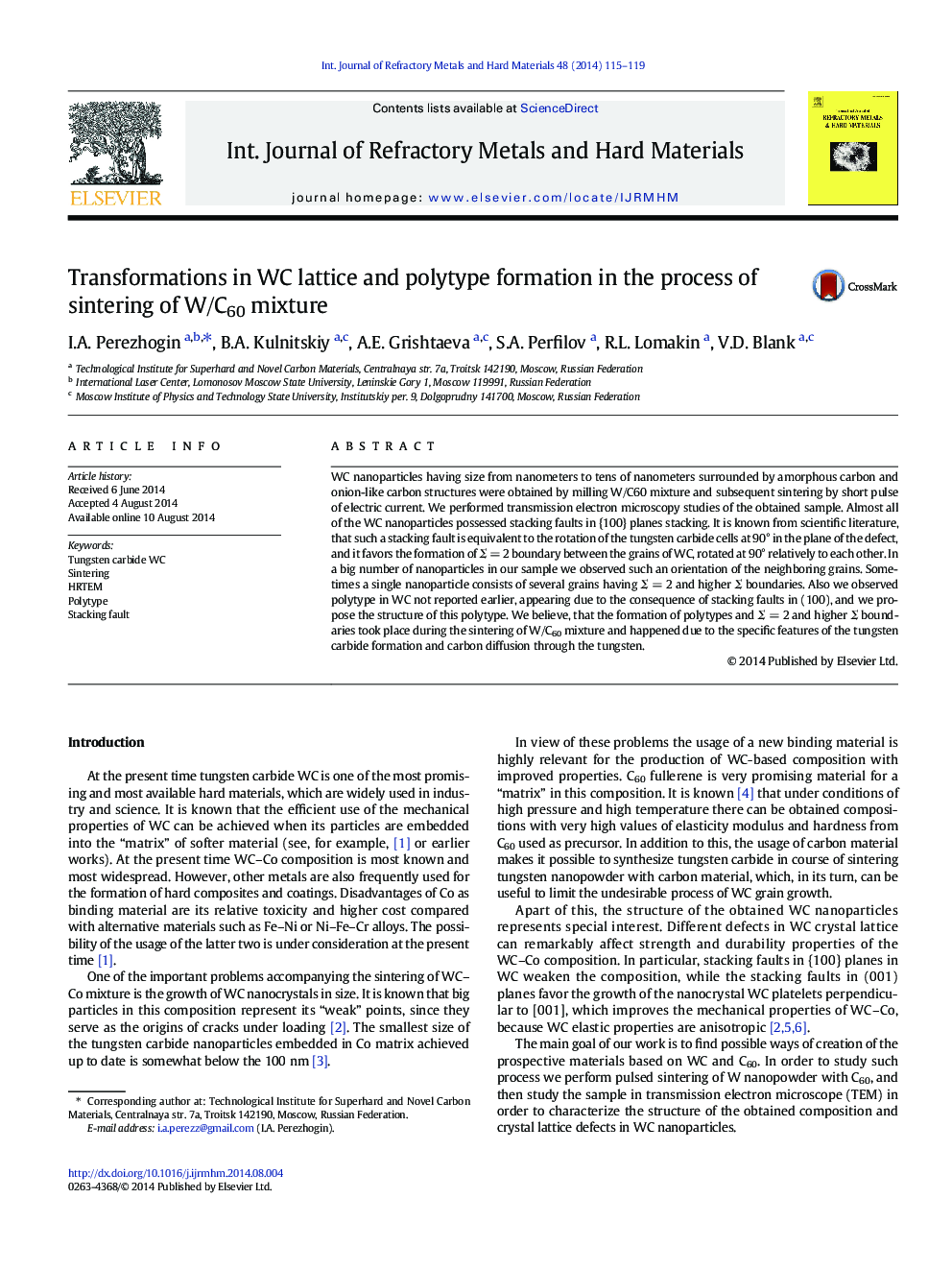| Article ID | Journal | Published Year | Pages | File Type |
|---|---|---|---|---|
| 1603086 | International Journal of Refractory Metals and Hard Materials | 2015 | 5 Pages |
Abstract
WC nanoparticles having size from nanometers to tens of nanometers surrounded by amorphous carbon and onion-like carbon structures were obtained by milling W/C60 mixture and subsequent sintering by short pulse of electric current. We performed transmission electron microscopy studies of the obtained sample. Almost all of the WC nanoparticles possessed stacking faults in {100} planes stacking. It is known from scientific literature, that such a stacking fault is equivalent to the rotation of the tungsten carbide cells at 90° in the plane of the defect, and it favors the formation of Σ = 2 boundary between the grains of WC, rotated at 90° relatively to each other. In a big number of nanoparticles in our sample we observed such an orientation of the neighboring grains. Sometimes a single nanoparticle consists of several grains having Σ = 2 and higher Σ boundaries. Also we observed polytype in WC not reported earlier, appearing due to the consequence of stacking faults in (100), and we propose the structure of this polytype. We believe, that the formation of polytypes and Σ = 2 and higher Σ boundaries took place during the sintering of W/C60 mixture and happened due to the specific features of the tungsten carbide formation and carbon diffusion through the tungsten.
Keywords
Related Topics
Physical Sciences and Engineering
Materials Science
Metals and Alloys
Authors
I.A. Perezhogin, B.A. Kulnitskiy, A.E. Grishtaeva, S.A. Perfilov, R.L. Lomakin, V.D. Blank,
